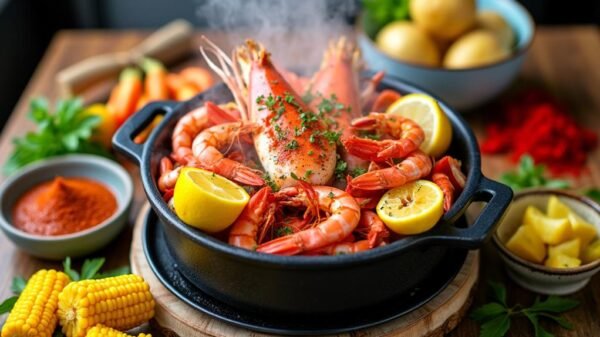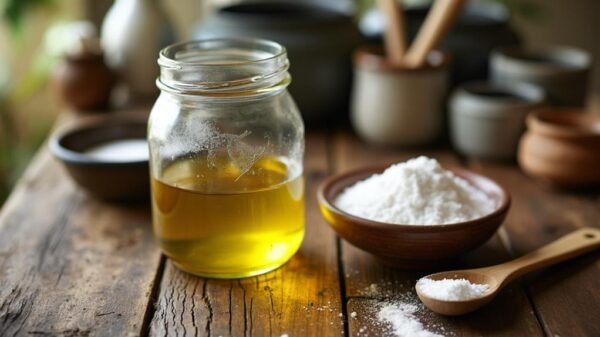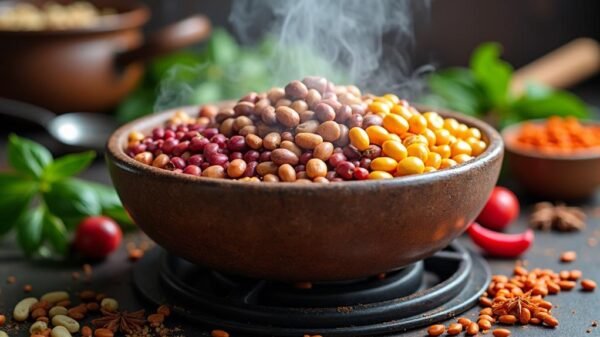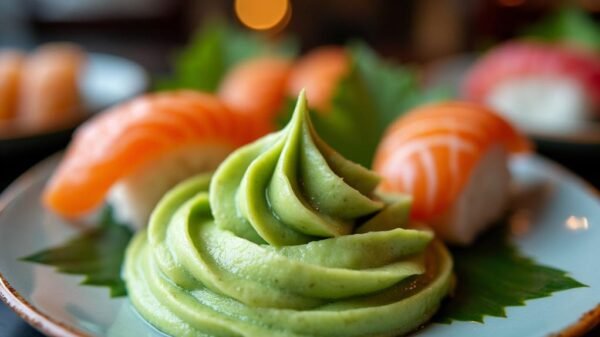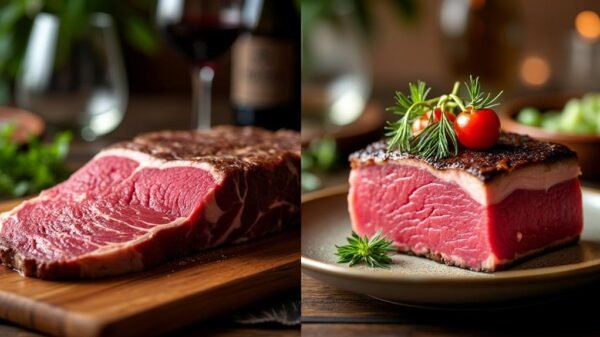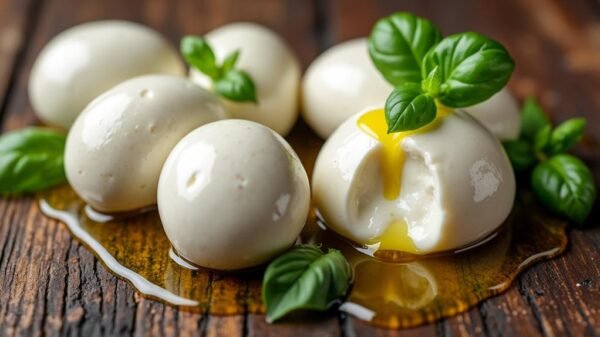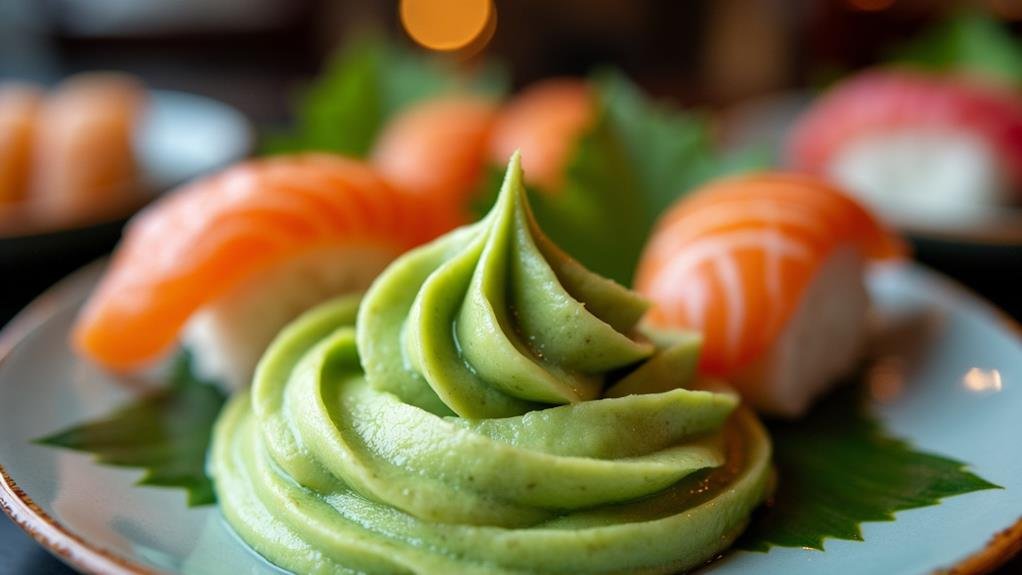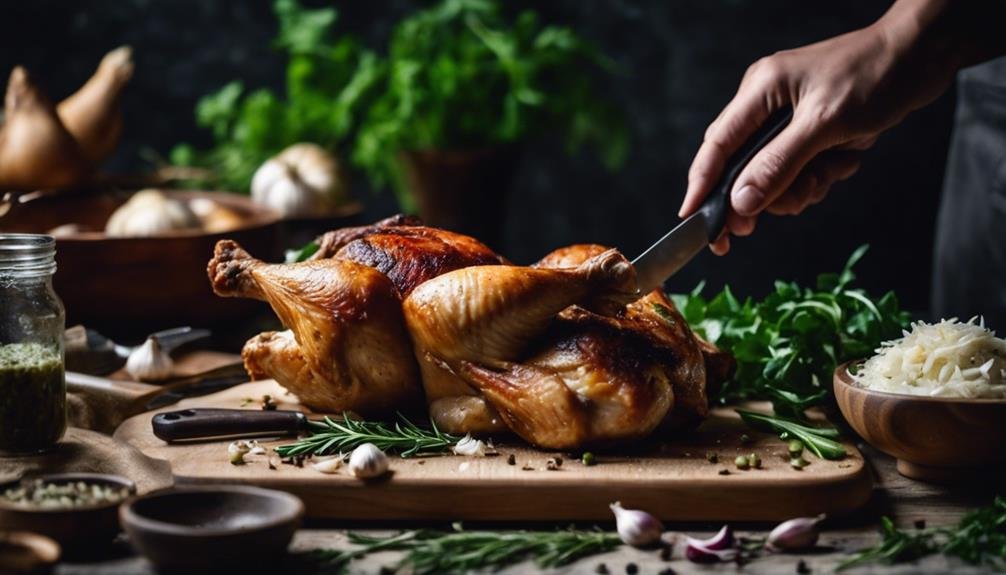Most wasabi served at restaurants is not the genuine Wasabia japonica. Authentic wasabi is rare and challenging to cultivate due to its specific growth requirements, leading to limited availability. Instead, many establishments use imitation wasabi, which typically consists of horseradish, mustard, and food coloring. This substitute is bright green and has a smoother texture compared to the real product. Genuine wasabi, freshly grated, offers a unique flavor and grainy texture that enriches dishes without overpowering them. Understanding the differences can enhance your culinary experience, and delving deeper into this subject reveals intriguing insights about wasabi sourcing and authenticity.
The Rarity of Real Wasabi
Real wasabi, known as Wasabia japonica, is a rare plant in culinary circles due to its specific growth requirements. This distinctive herb flourishes in cool, moist environments, making cultivation outside Japan challenging. Traditional farming methods prioritize organic practices, steering clear of commercial agricultural chemicals, which further limits its availability. Additionally, the propagation method, tissue culture, poses significant risks, with a failure rate of approximately 60%. This results in the reality that authentic wasabi is both difficult to grow and costly, leading to a supply-demand imbalance.
Restaurants focusing on genuine wasabi often face difficulties in sourcing fresh supplies consistently. As a result, many establishments resort to substitutes, which fall short of the nuanced flavor of true wasabi. For culinary enthusiasts eager for an authentic experience, uncovering the sourcing secrets behind real wasabi can enhance their dining adventures. Despite the obstacles, the appetite for genuine wasabi continues to rise, encouraging food lovers to seek out this exquisite ingredient and deepen their appreciation for authentic Japanese cuisine.
Identifying Authentic Wasabi
Authentic wasabi can often be found in specialized restaurants and gourmet markets, providing food lovers with a unique culinary experience. To identify real wasabi, one should first examine its presentation. Genuine wasabi is usually served freshly grated from the rhizome, resulting in a grainy texture and a delicate green hue, distinguishing it from imitation versions. In contrast, fake wasabi, typically made from horseradish, is often bright green and has a smoother consistency.
When searching for authentic wasabi, look for well-regarded dining establishments known for their commitment to traditional Japanese cuisine, as well as local Asian grocery stores and specialty food shops that may offer fresh wasabi rhizomes. Additionally, some farmers sell genuine wasabi online, providing more options for enthusiasts.
It is important to remember that real wasabi has a complex flavor profile that is both subtle and refined, unlike the sharper heat associated with imitation products. By staying observant and informed, diners can enhance their culinary journey with the true essence of real wasabi, supporting its cultivation and preservation in the culinary world.
Real Vs. Imitation Wasabi
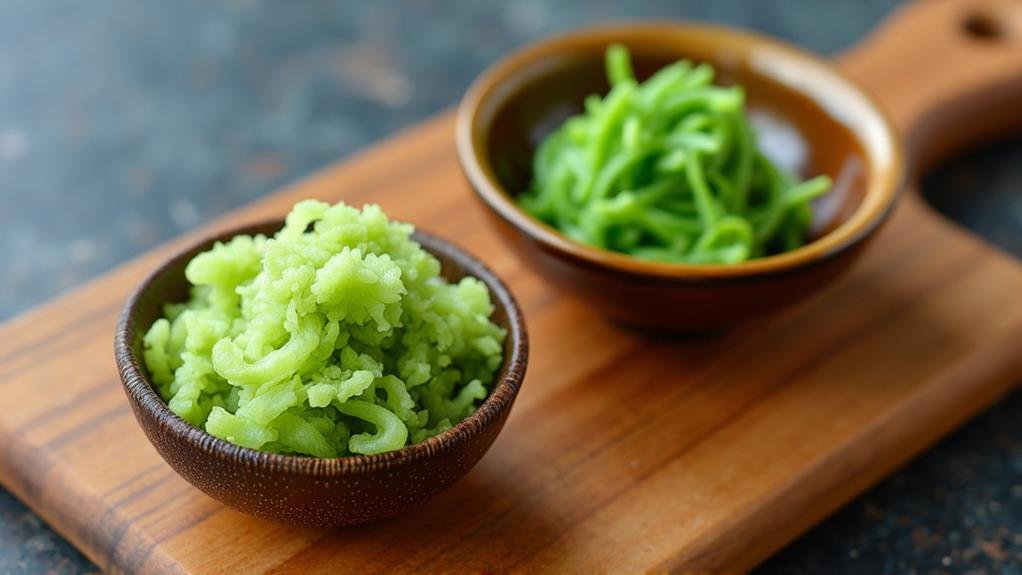
The difference between real wasabi and imitation wasabi is significant. Real wasabi comes from the Wasabia japonica plant. It has a rich flavor, often described as having hints of fresh blueberries. Its heat is gentle, providing mild warmth that enhances dishes without overwhelming them.
Imitation wasabi, on the other hand, primarily consists of horseradish, mustard, and food coloring. Its spiciness is sharp and harsh, offering a simpler taste that can overpower the palate. The texture of real wasabi, especially when freshly grated, is coarse and varied, unlike the uniform paste of imitation versions.
Choosing real wasabi, such as that from brands like S&B or Kizami, not only elevates the dining experience but also supports sustainable farming practices. As diners become more aware of these differences, they can make choices that reflect their desire for authenticity and high quality in their meals.
Cultivating Wasabi Beyond Japan
Interest in cultivating wasabi has grown beyond Japan, with successful production seen in the American Pacific Northwest and New Zealand. These regions provide the cool, moist climates essential for wasabi growth, enabling farmers to cultivate this sought-after plant outside its traditional environment.
However, growing authentic wasabi is a challenging task. The wasabi plant requires specific conditions, including shade and clean, flowing water, which can be daunting for farmers unfamiliar with its cultivation needs. Additionally, traditional farming methods prioritize sustainability, often steering clear of commercial agricultural chemicals. This commitment to organic practices can lead to lower yields and higher production costs.
Tissue culture propagation presents an alternative for wasabi cultivation, but it comes with significant challenges, as around 60% of attempts fail. Consequently, even as wasabi farming becomes more widespread, true wasabi remains a rare and costly commodity. Consumers seeking genuine culinary experiences should look for trusted sources, recognizing that acquiring real wasabi is not only about taste but also about supporting sustainable farming practices and preserving this unique plant.
Advantages of Real Wasabi

Growing authentic wasabi outside Japan enhances availability and enriches culinary experiences. Real wasabi provides a complex flavor compared to common substitutes made from horseradish and synthetic dyes. The gentle heat of real wasabi complements dishes, allowing the flavors of sushi and sashimi to shine.
Furthermore, enjoying genuine wasabi elevates dining by offering a playful sensation on the palate. The texture of freshly grated wasabi is gritty, and its vibrant green color indicates authenticity. This rich flavor is often compared to the freshness of blueberries, offering a nuanced taste that substitutes lack.
Moreover, selecting real wasabi supports sustainable farming practices and helps preserve this rare plant. By choosing authentic wasabi, consumers enjoy a superior culinary experience while contributing to the cultivation of this exquisite ingredient. In a culinary landscape where taste and authenticity matter, real wasabi emerges as a choice representing quality and tradition.





